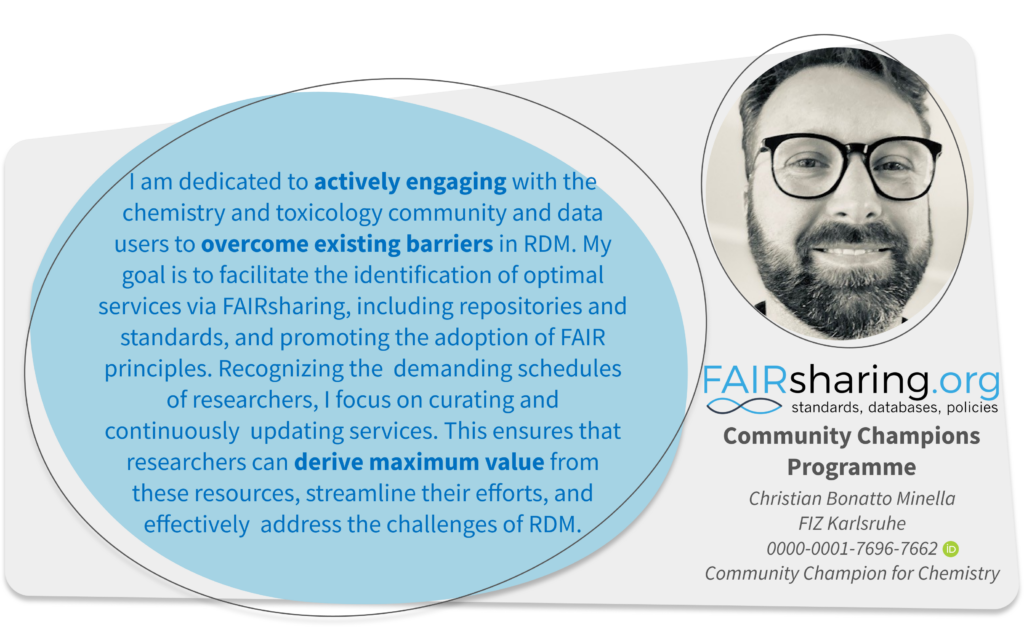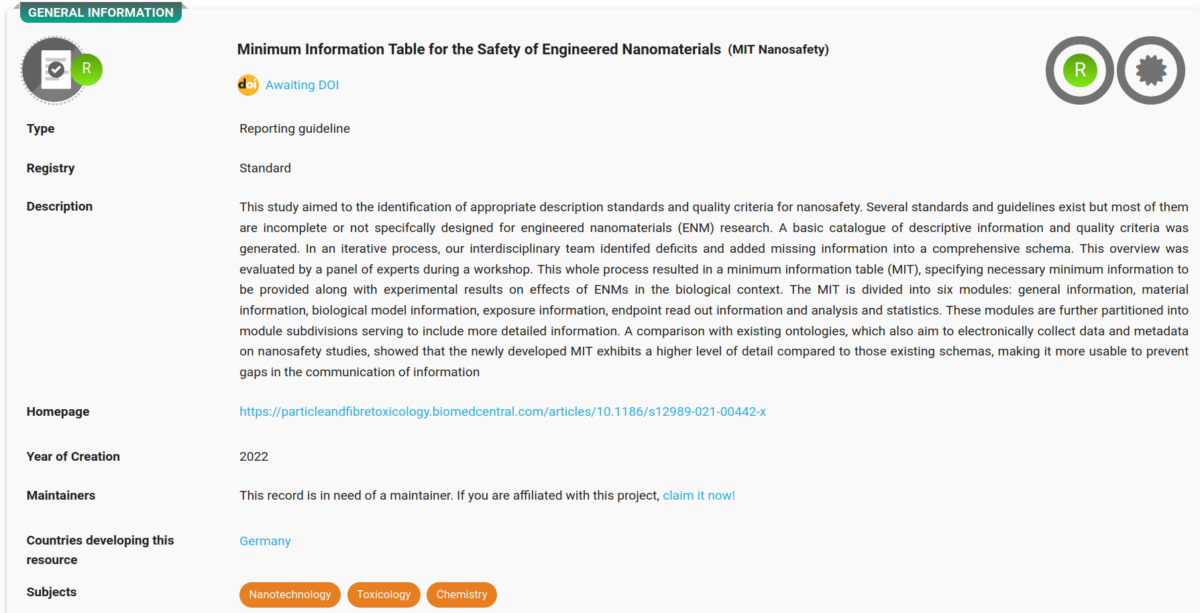In this guest blog, FAIRsharing Community Champion for Chemistry Christian Bonatto Minella describes the Minimum Information Table for the Safety of Engineered Nanomaterials (MIT Nanosafety), and how the addition of this reporting guideline to FAIRsharing forms part of his role as a Champion.
Advancing Nanosafety through Standardization: the Minimum Information Table for the Safety of Engineered Nanomaterials (MIT Nanosafety)
Assessing the safety of engineered nanomaterials (ENMs) is a complex and multidisciplinary process, yielding vast amounts of valuable information. To ensure its accessibility and usability for researchers, manufacturers, and regulators, a critical need exists to structure, harmonize, and digitize this wealth of data and metadata.
The study of Elberskirch et al. aimed to identify suitable description standards and quality criteria specifically tailored for nanosafety. While numerous standards and guidelines exist, many fall short or lack specificity for ENM research. Merging content from diverse sources, our interdisciplinary team crafted a foundational catalog of descriptive information and quality criteria. Through iterative refinement and external expert evaluation, this effort culminated in a Minimum Information Table (MIT) for the Safety of Engineered Nanomaterials.
The MIT, flexibly and modularly designed, delineates the essential information accompanying experimental results on ENM effects in a biological context. Comprising six modules—general information, material details, biological model specifics, exposure conditions, endpoint readouts, and analysis and statistics—the MIT ensures comprehensive data representation.
Comparison with existing ontologies for nanosafety data and metadata collection highlighted the superior detail of the MIT, mitigating information gaps. This concise communication advocates for the incorporation of MIT standards in ELNs as a pivotal step toward standardized and effective nanosafety assessment methodologies.This integration not only streamlines processes but could also elevates experiment reproducibility and reusability.
Moreover, the MIT’s applicability gains significance in the context of novel non-animal alternative test methods, aligning with the dynamic landscape of nanosafety studies.
MIT Nanosafety can be found in FAIRsharing at https://fairsharing.org/5228 and is part of the ELIXIR Toxicology Community Collection.
FAIRsharing Community Champions

Christian has been very active in the programme since he began his role at the beginning of this year. He has started a review of our Chemistry records in the context of his work as part of the NFDI4Chem community and has joined the ELIXIR Toxicology Community to better maintain its collection in FAIRsharing. As he has told us, Christian is dedicated to actively engaging with the chemistry and toxicology community and data users to overcome existing barriers in RDM. His goal is to promote the adoption of FAIR principles and facilitate the identification of optimal services – including repositories and standards – via projects such as FAIRsharing. Recognizing the demanding schedules of researchers, he focuses on curating and continuously updating services. This ensures that researchers can derive maximum value from these resources, streamline their efforts, and effectively address the challenges of RDM.
